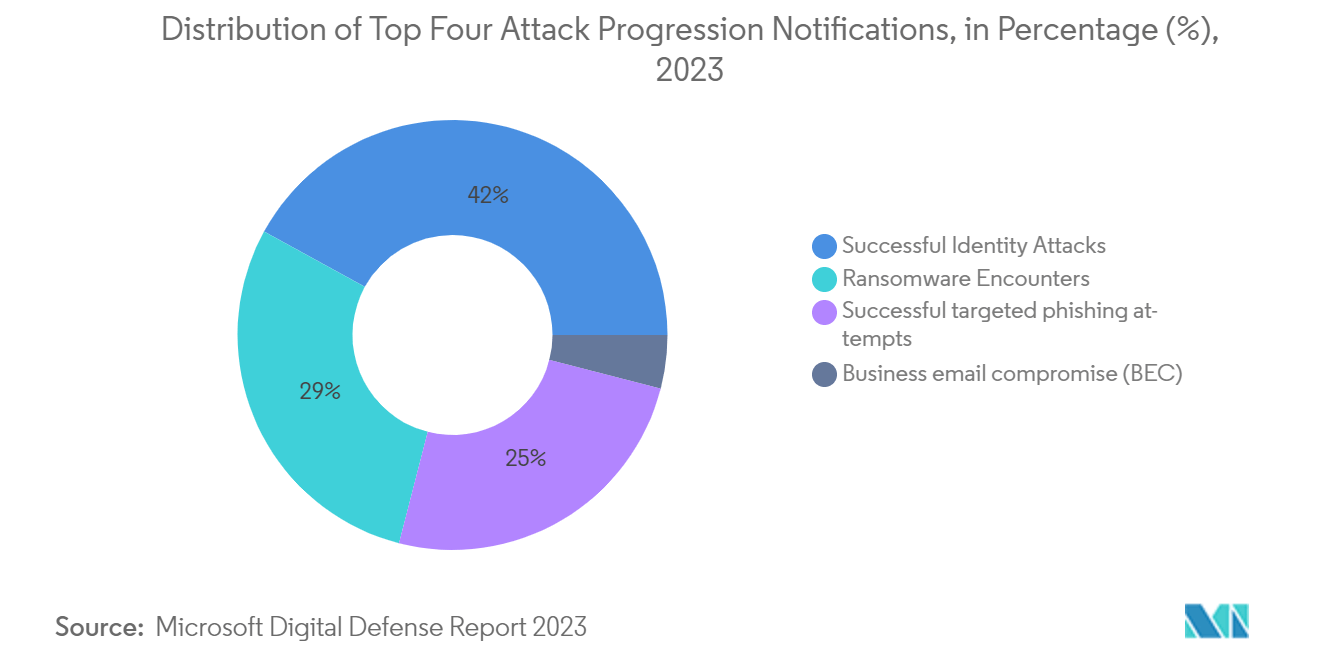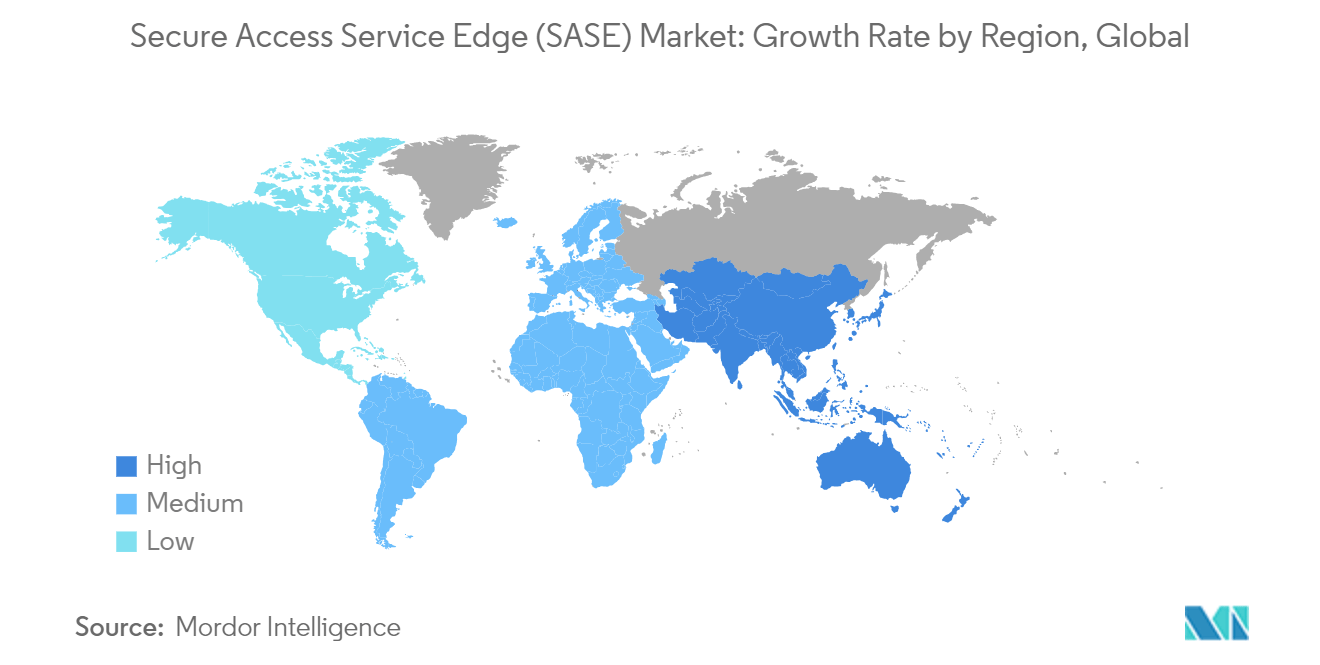Market Trends of Secure Access Service Edge Industry
Large Enterprises will Hold Major Market Shares
- Increased adoption of edge computing, the shift to cloud infrastructure, and a surge in remote work have challenged many traditional network architectures and security models. Large enterprises with access to larger IT budgets and skilled employees are rapidly adapting to this market reality.
- Large enterprises with a distributed workforce model find the traditional WAN architectures with rigidly limited VPN aggregation capacity inadequate for most work-from-anywhere (WFA) workflows. Existing security models and fixed digital transformation investments have slowed down the adoption of SASE among large enterprises over the last few years.
- The global market is witnessing an expansion in new IT infrastructure. Large enterprises that combine security and networks into a single cloud platform are proliferating. As a result, Malware-as-a-service has moved to large-scale operations against exposed IoT and OT in hospitals, oil and gas fields, electrical grids, transportation services, and corporate networks. Threat actors require significant research efforts to uncover and exploit the configuration of operating environments and embedded IoT and OT devices.
- According to the Microsoft Digital Defense Report 2023, Microsoft said that globally, there has been a growing number of attacks, of which identity attacks are the most common, and 42% of the total attacks are only identity attacks. Also, every year, there has been an increasing number of cyberattacks, and the cost of ransomware-related damage increases globally. As per the report published by Microsoft in 2024, attempted password attacks have soared to over 30 billion from around 3 billion per month.
- In a connected digital world, devices communicate online with larger systems, collecting voluminous data and creating visibility to bring business opportunities to large enterprises. This situation also opens the doors for cyber threats, making the cybercrime business worth multi-billion dollars. IoT devices such as computers, routers, printers, web cameras, and remote management devices are at a security risk. These devices are critical to many organizations' operations; hence, they can quickly become a liability and security risk. The rapid adoption of IoT solutions close to every industry has increased the number of attack vectors and organizations' risk exposure. Attacks against remote management devices, attacks via the web, and attacks on databases are most prevalent among large enterprises.
- The aforementioned incidents are likely to boost the adoption of the network-as-a-service (NaaS) in large enterprises due to its ability to stand out from other secure networking strategies. Rather than relying on data center security, SASE has a direct approach as the overall traffic from the users' devices is inspected at a nearby point of presence before being sent to its final destination. This makes it an ideal option for protecting distributed workforces and data in the cloud. In modern cloud-centric large enterprises, users, devices, and applications require secure access while working from anywhere. Legacy systems cannot tolerate the bandwidth needed to provide this flexibility. However, SASE can do so while maintaining enterprise-level security for users and devices at any location, which bolsters this segment's demand.

North America will Hold a Significant Share
- The United States is a developed economy with a significant inclination toward implementing and accepting advanced technology, development in network automation, and surge in cloud-based services, thereby contributing to the secure access service edge market. The growing digitization among end-user industries and the presence of prominent market vendors, like Cisco Systems Inc., Vmware Inc., Palo Alto Networks, Versa Networks Inc., and Akamai Technologies, are contributing to the market's growth.
- Security is moving toward cloud computation due to the fast acceleration of the digital transformation of businesses. The significant adoption of cloud services in several end-user industries necessitates securing the network infrastructure and reducing complexity to improve speed and agility. This is anticipated to create substantial growth opportunities for market vendors in the coming years.
- The United States is home to three major cloud service providers: Amazon Web Services, Microsoft's Azure, and Google Cloud. It is also considered to be the hub for major technological innovations such as 5G, autonomous driving, IoT, Blockchain, artificial intelligence, and gaming. Integrating SASE capabilities converges zero trust security capabilities into enterprise architectures, which is paramount in achieving a trusted network security posture. Thus, SASE solutions are analyzed to transform the end-users networks and security architectures to reduce cyber risks, costs, and complexities.
- Orange Business, Palo Alto Networks, and Orange Cyberdefense partnered in August 2023 to deliver a cloud-native managed security access service edge (SASE) solution to enterprises globally. The digital attack surface has expanded as organizations expedite cloud adoption to accommodate hybrid work and deliver the latest products and services to their customers. The partnership provides the industry's most complete AI-powered SASE solutions, advisory and consultant services, and global managed network, security, and digital services. Organizations using this offering can maximize their SASE transformation's return on investments (ROI).
- Canada is at the forefront of cloud adoption. Many organizations are deploying a mix of public, private, and edge clouds. With the rise of hybrid work and cloud transformation, the demand for security services to expand beyond the network perimeter is increasing, positively impacting the growth of the country's market. In addition, stringent data protection and regulatory legislation in the country further drive the demand for SASE solutions in end-user industries.
- The market demand is anticipated to rise significantly due to increasing automation and deploying connected devices. The network-as-a-service (NaaS) model benefits small businesses by offloading day-to-day equipment maintenance and focusing on tasks such as customer service. With a large base of small businesses in Canada, NaaS is expected to become a significant trend in the coming years.


